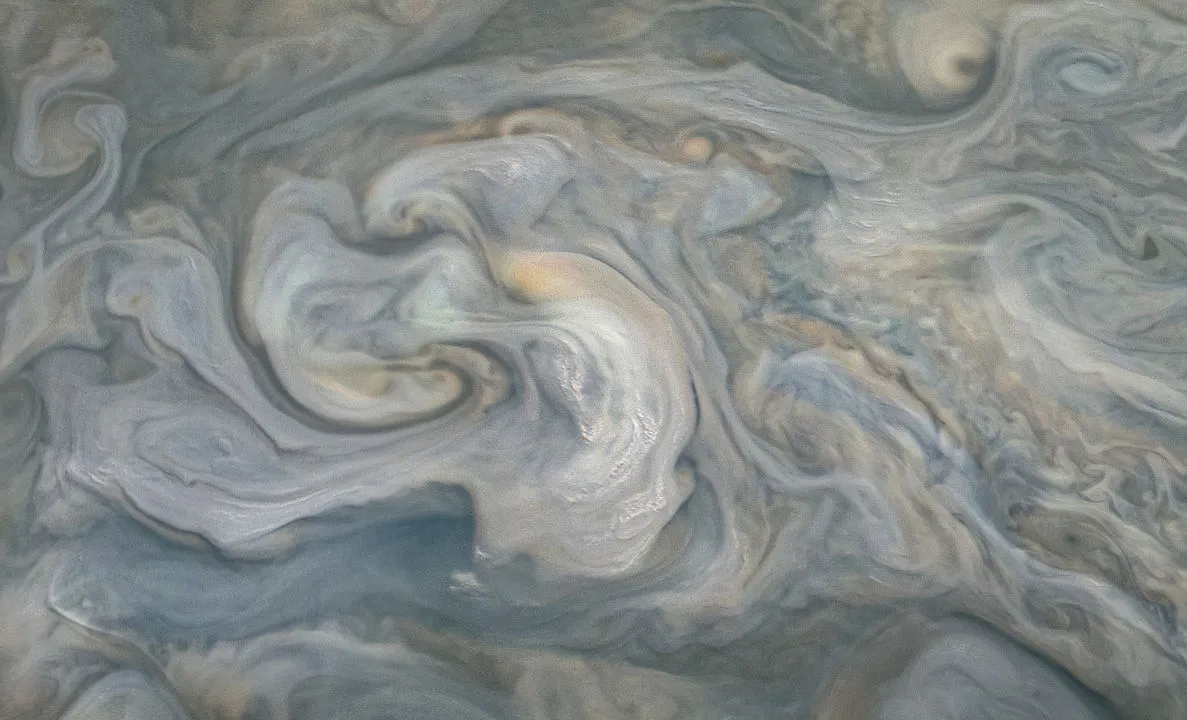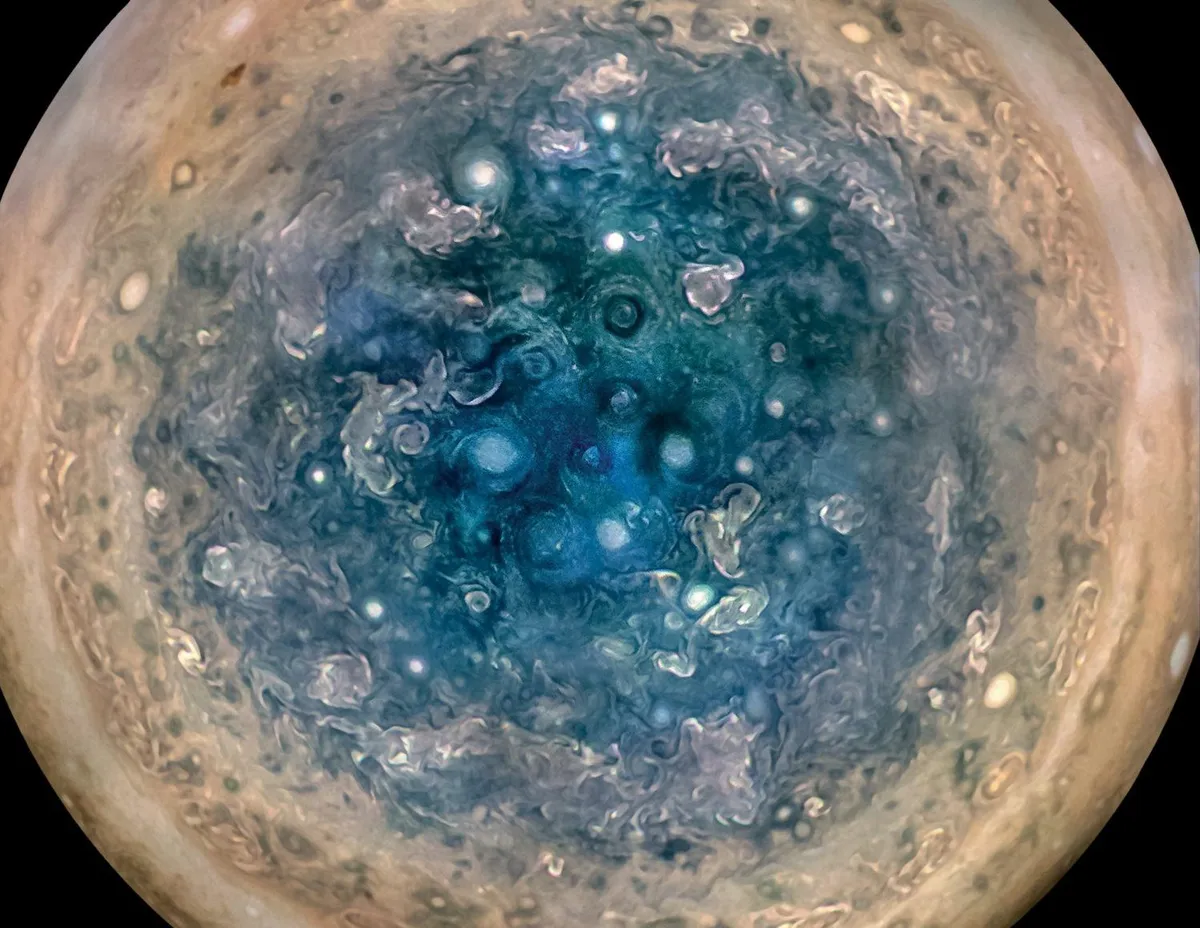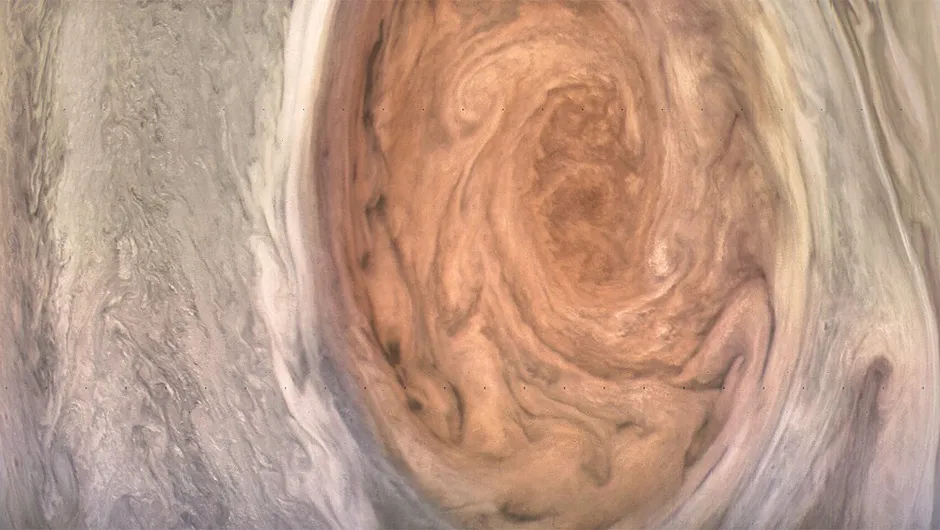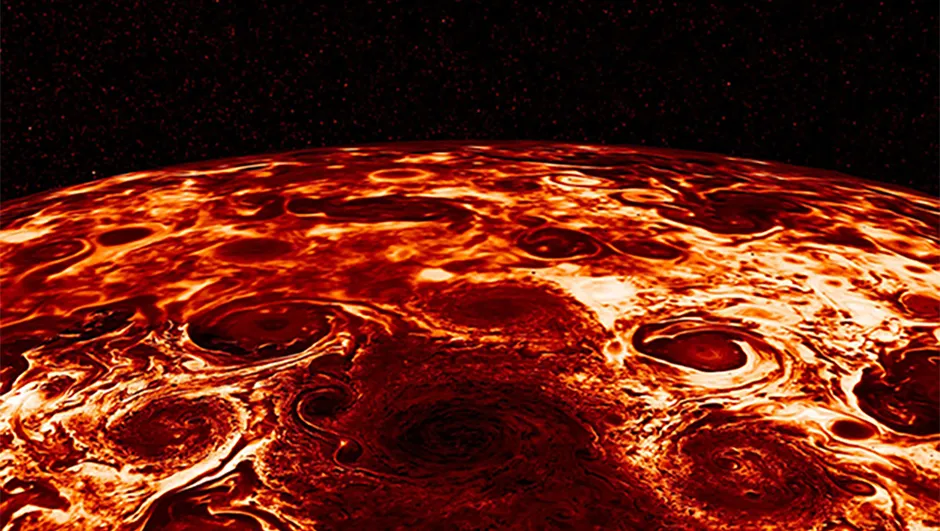What are the similarities between a small, rocky planet like Earth and an enormous gas giant planet like Jupiter, 714 million km (444 million miles) away?
Quite a bit, as it happens, and it turns out that scientists can learn a lot about Jupiter's storms by applying what we know about Earth's oceans.
Lia Siegelman is a physical oceanographer at UC San Diego’s Scripps Institution of Oceanography, whose research shows that Jupiter's storms – specifically those at the planet's polar regions – are powered by physical processes that are also seen in Earth's oceans and atmosphere.

Jupiter vs Earth
Earth is a rocky planet covered in liquid water, while Jupiter is a 'gas giant' made up mostly of hydrogen and helium.
Jupiter is so much bigger than Earth, that about 1,300 Earths could fit inside it. In fact, all the other planets in the Solar System could fit inside Jupiter.
“Jupiter is basically an ocean of gas,” says Siegelman, who in 2018 noticed striking similarities between images of Jupiter's enormous cyclonic storms and images of Earth's ocean turbulence.
In physics, air and water are both considered fluids, so Jupiter can be said to have the biggest ocean in the Solar System.
It might even be considered an ocean planet.

NASA's Juno mission
In 2022, Siegelman co-authored a study published in Nature Physics that looked at images of Jupiter’s cyclones captured by NASA’s Juno spacecraft, which has been orbiting the planet since 2016.
Juno orbits Jupiter from pole to pole, revealing a side of the planet never seen before and giving planetary scientists amazing views of the gas giant's polar cyclones.
In the paper, Siegelman and colleagues, including co-author Patrice Klein of NASA’s Jet Propulsion Laboratory, showed how the type of convection that maintains Jupiter's storms is similar to that which powers Earth's ocean turbulence.

Jupiter's storms are hefty beasts and can last for hundreds of years. Its biggest and most famous, the Great Red Spot, is about 1.3 times the size of Earth.
The 2022 study looked at Jupiter’s cyclones and formations described as 'wispy tendrils', known formally as 'filaments', in spaces between the gassy vortices.

These filaments are similar to features seen on Earth, and Siegelman was able to use images captured by the Juno spacecraft to discover just how similar these features on the two planets are.
The study found there are indeed similarities between the processes fuelling Jupiter’s cyclones and those on Earth.
Jupiter’s filaments are similar to what oceanographers and meteorologists call 'fronts' on Earth.

Fronts on Jupiter and Earth
You'll have heard weather forecasters talk about 'cold fronts', and these are the boundary between sections of gasses or liquids with different densities.
The edges of fronts have strong vertical velocities that can create winds or currents.
Siegelman examined a series of infrared images of Jupiter’s north polar region, captured in 30-second increments.
Because the images are in infrared, the scientists were able to determine temperature variations.
On Jupiter, hotter sections of the atmosphere mean thin clouds; colder parts mean thick clouds, because those thicker clouds are blocking more heat coming from Jupiter's core.

They were also able to track the movements of Jupiter's clouds, using a series of images captured in 30-second intervals to calculate horizontal wind speeds.
And via the same methods used in the study of Earth's oceans, they could calculate vertical wind speeds corresponding to the temperatures and horizontal wind speeds derived from the images.
They found Jupiter’s filaments were behaving like fronts on Earth.

Cosmic connections
"These cyclones on Jupiter’s poles have persisted since they were first observed in 2016," says Siegelman.
"These filaments in between the large vortices are relatively small but they are an important mechanism for sustaining the cyclones.
"It’s fascinating that fronts and convection are present and influential on Earth and Jupiter – it suggests that these processes may also be present on other turbulent fluid bodies in the Universe."
"There is some cosmic beauty in finding out that these physical mechanisms on Earth exist on other far-away planets."
Read the full paper at www.nature.com/articles/s41567-021-01458-y.epdf (PDF)
Original story at scripps.ucsd.edu
